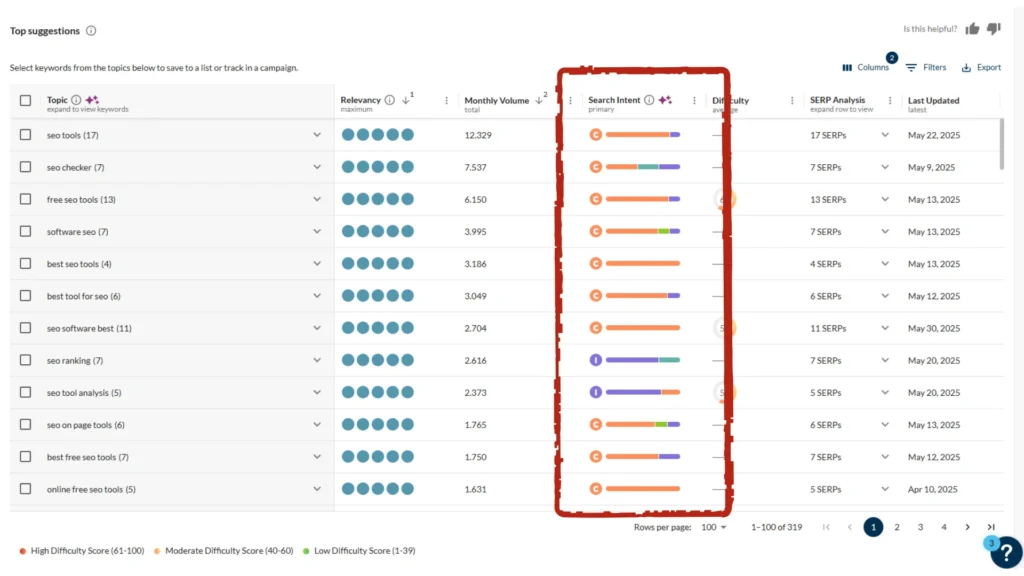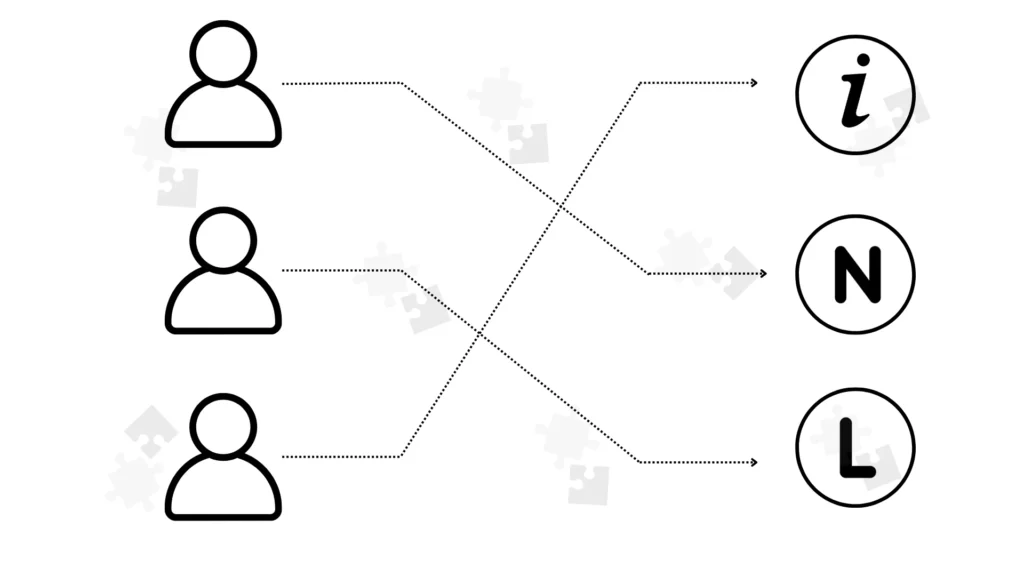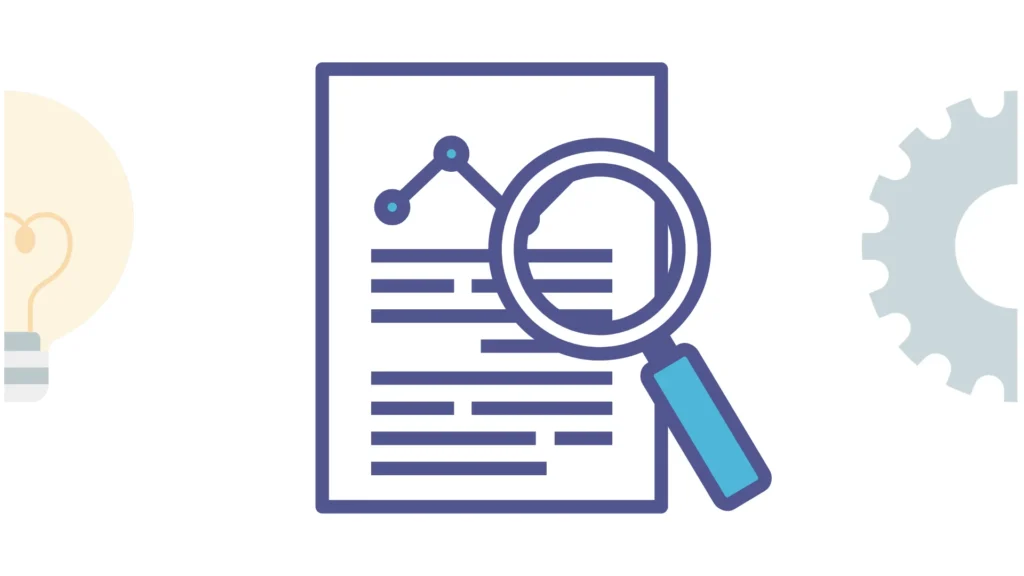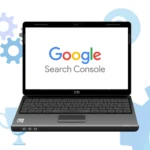
Back in the early days of SEO, people often measured success by how many times they could cram a keyword into a page. The more repetitions, the higher the rankings—or so the theory went.
But people have long left those days behind. Search engines like Google have become smarter. They focus on quality, relevance, and matching search intent instead of just keyword density.
These days, good SEO means truly getting what users want — and delivering it. It’s not just about what users are typing into the search bar, but why they’re searching in the first place. Are they looking for information, trying to navigate to a specific site, or ready to make a purchase? Recognizing these intentions allows you to create content that truly meets their needs.
In this article, we’ll delve into the concept of intent-driven SEO. We will look at the different types of search intent. We will additionally cover how to recognize them.
Finally, we will explain how to adjust your content to match.. By the end, you’ll have a clearer understanding of how to create content that not only ranks well but also resonates with your audience.
Here’s where it begins.
What Is Intent-Driven SEO?
Let me break it down simply.
Intent-driven SEO means you’re not just chasing keywords — you’re answering questions. You’re solving problems. Your appearance in search results depends on more than just using keywords. It also relies on how well your message matches your audience’s values.
Here’s how I think about this:
Traditional SEO was like fishing with a wide net. Toss in every version of a keyword, hope for clicks. Google’s not what it used to be.
Now, it’s more like matchmaking — connecting real questions with real answers. If your content doesn’t align with what someone actually wants, Google’s not going to send them your way.
That’s where intent-driven SEO comes in.
Your content should match what people are actually searching for — and why they’re searching. Not just what they typed, but why they typed it. Someone searching “best CRM tools for small business” doesn’t want a definition of “CRM.” They want options, reviews, maybe even pricing breakdowns.
Search engines today — especially Google — are getting eerily good at decoding this. Thanks to machine learning and semantic search, they’re not matching keywords word-for-word anymore. They’re matching intent.
This is what separates high-performing content from the stuff that collects digital dust. Focus on user intent, and your content gets better — more relevant, more engaging, and yes, it tends to rank higher.
What’s the bottom line? Intent-driven SEO is less about gaming the algorithm, and more about understanding your user. That’s the shift. If you’re not keeping up, you’re slipping behind.
Understanding the Types of Search Intent

Not all searches are created equal — and if you treat them like they are, your SEO results will suffer. Badly.
I used to think: “Just target high-volume keywords, and the traffic will follow.”
But once I actually looked at what ranked — and why — it hit me: it’s not about volume. It all comes down to intent.
What I’ve learned over time is that every search falls into one of five core buckets. And if your content doesn’t match the intent behind the keyword, it might as well not exist.
So, let’s break them down:
Informational Intent
This is the “I need to learn something” crowd.
Think searches like:
- “what is search intent”
- “how to do keyword research for intent”
- “SEO content strategy examples”
These users aren’t looking to buy yet. They’re exploring. Researching. Curious.
To win here, create educational content that goes deep but stays clear. Think blog posts, ultimate guides, explainer videos, even infographics. I’ve tested this and FAQ schema often gives these posts a boost in rich snippets.
Navigational Intent
This one’s easy to miss.
These folks already know where they want to go. They just need Google to get them there.
Searches like:
- “AlliAI login”
- “Ahrefs blog”
- “Search Engine Land homepage”
This is where branded SEO comes in. Make sure your official pages appear first — not some random affiliate trying to steal your clicks.
Optimize your meta titles, page names, and internal links around brand terms. Make your nav simple. Help people reach their goal without delay
Transactional Intent
This is where revenue enters the picture. This is the high-intent stuff like:
- “buy SEO tools”
- “cheap CRM software”
- “start free trial AlliAI”
Users here are ready to act. And they don’t want fluff — they want clarity, speed, and confidence.
Your landing pages should be laser-focused:
- Fast-loading
- Clear CTAs above the fold
- Social proof, trust badges, and reviews
- No distractions
Commercial Investigation
These searchers are close to buying, but they need to compare.
You’ll see queries like:
- “best keyword research tools 2025”
- “Surfer SEO vs Clearscope”
- “top email platforms for ecommerce”
Here’s how I approach it: give them the decision-making ammo. Pros and cons. Feature breakdowns. Tables. Authentic reviews matter.
Bonus if you’ve actually used the tools and can speak from experience.
What’s the goal here? Be the resource they bookmark while they’re still deciding.
Local Intent
And finally, local searches — where someone’s trying to find a solution nearby, often from their phone.
Think:
- “plumber in Austin”
- “best sushi near me”
- “Navigational user intent explained NYC SEO meetups”
To succeed in this area, make sure your Google Business Profile has accurate NAP details. Include positive reviews and relevant local keywords. Mobile optimization is critical. Most of these searches happen on the go.
Even national brands can benefit from local SEO if they have brick-and-mortar locations or regional service pages.
Why Aligning Content with User Intent Matters

Here’s the truth: if your content misses the mark on intent, users leave fast.
They leave the page. Most users scan, not read. They go back to Google.
And when that happens? Google takes the hint.
From what I’ve seen, this is one of the fastest ways to tank your rankings. High bounce rates, short dwell times, zero engagement — these are signals that your page isn’t delivering what the searcher wanted. And Google doesn’t reward that.
Now, reverse the lens.
When your content nails user intent? People stay longer. They scroll. They click. They convert.
One client I worked with — a B2B SaaS brand — rewrote their blog library with search intent front and center. Instead of targeting keywords blindly, we mapped every topic to its actual purpose: awareness, evaluation, or action. In three months?
- Organic CTR jumped 27%
- Time on page nearly doubled
- Blog conversions (trial signups) went up 41%
That’s not a fluke. Your content builds trust when it speaks directly to the reader.
Google notices too.
Intent-aligned content is more likely to win rich results — featured snippets, “People Also Ask,” video carousels. It also tends to get more natural backlinks because it actually answers real questions.
You might be thinking, “Does this actually matter if I’m already ranking?” I thought the same — until I saw rankings drop from just a slight mismatch in content angle.
In short: it matters.
And if your competitors are aligning better than you are, don’t be surprised when they outrank you.
How to Identify User Intent Behind Keywords

Okay, so you’ve got a juicy keyword. Nice. But now comes the real move: figuring out why someone’s searching for it.
Here’s the thing, keywords don’t exist in a vacuum. They live inside user behavior. If you don’t understand the “why” behind a query, you’re just guessing. And that’s not a strategy.
Let me walk you through it.
Start with the SERP
This is where I always begin.
Type your keyword into Google and study what’s ranking.
Are the top results blog posts? Product pages? Tutorials? Videos?
That mix tells you what Google thinks the user wants. And since Google’s whole goal is satisfying intent, your job is to reverse-engineer that.
For example, search “best free SEO tools.”
If you’re seeing roundup lists, comparisons, and blog content — the intent is likely commercial investigation. But if ecommerce pages dominate? Chances are, it’s transactional.
Look for SERP Features
These little clues are gold:
- Featured snippets → informational intent
- Shopping carousels → transactional intent
- “People Also Ask” → often commercial or informational
- Video results → tutorials or how-tos
Google is literally showing you what format satisfies the searcher. Follow the breadcrumbs.
Use Intent Modifiers
Certain words in a keyword are dead giveaways.
- “How to,” “guide,” “what is” = Informational
- “Buy,” “cheap,” “free trial” = Transactional
- “Best,” “vs,” “top tools” = Commercial Investigation
- Brand names or URLs = Navigational
- “Near me,” location names = Local
This is basic, but most people skip it.
Use Tools for Keyword Context
I like to use Ahrefs, Semrush, and Clearscope for this. They help you see keyword variations and what else people are searching. But honestly, the SERP is your best data source.
Bonus move: build a keyword-intent map.
Just a simple spreadsheet. Add columns for:
- Keyword
- Search volume
- Difficulty
- Intent type
- Content format
- Funnel stage
It helps you prioritize what to write, and how to angle it.
Crafting Content That Matches User Intent

So, you’ve figured out the intent behind the keyword.
Time to build content that hits the mark — format, structure, CTA, all dialed in. Because if the content doesn’t feel right for where the user is in their journey, it’s not going to work.
I like to break it down like this:
Informational Intent → Be the Guide
This is your time to educate.
Write clear, helpful guides. Structure them with logical subheadings that mirror the user’s questions. Add internal links to related topics so people can dig deeper. Drop in a video or infographic if it helps explain.
Think:
- Blog posts
- Step-by-step tutorials
- FAQs
- Glossaries
And don’t forget: schema markup (especially FAQPage) can boost visibility in SERPs.
Navigational Intent → Keep It Simple
This one’s all about clarity and speed.
If someone’s Googling “AlliAI dashboard” or “yourbrand blog,” don’t give them friction — give them exactly what they expect.
Your job here:
- Make brand pages easily findable
- Use concise, branded meta titles and descriptions
- Optimize navigation to get them where they want to go, fast
No fluff. Keep it clean and focused Just let them land and move.
Transactional Intent → Get to the Point
These users want to take action. So your content better let them.
Make your CTAs pop. Keep product descriptions tight. Load pages fast. Use comparison tables, FAQs, and reviews to kill objections before they arise.
Put your “Buy Now” or “Start Free Trial” buttons above the fold. Add trust signals like testimonials and guarantees. Reduce anything that creates second-guessing.
I’ve tested this and — seriously — trimming the fluff can 2x your conversion rate.
Commercial Investigation → Help Them Choose
These users are in decision mode. People are weighing their options, comparing pros and cons, and figuring out what’s right for them.
Meet them with:
- Side-by-side comparison posts
- Product vs product articles
- “Best of” lists with clear reasoning
- Video walkthroughs
Give them clarity and confidence.
Local Intent → Be Findable
Here it’s all about proximity and trust.
Use location keywords naturally. Mention neighborhoods, nearby landmarks, anything hyperlocal. Embed a map.
Use local schema markup. And — seriously — your mobile site better be fast and clean. Most local searches happen on phones.
And make sure your Google Business Profile is spotless. Think of it as your homepage for local searchers.
Quick tip: Mirror the content format of top-ranking pages, then make yours better. Add something they missed. Update stale info. Make it easier to skim or deeper in value.
Match the intent — and then raise the bar.
Measuring the Success of Search-Intent SEO

You’ve done the work. You mapped the intent. You built the content. Now it’s time to ask: is it actually working?
In short, if people are engaging, converting, and sticking around, you’re probably on the right track.
Here’s what I watch:
1. CTR (Click-Through Rate)
If your title and meta match the user’s intent, more people click. Simple.
Use Google Search Console to track this. Look for underperforming pages with lots of impressions but low CTR. Tweak your titles and descriptions to better reflect what users want from that search.
Small tweaks to your copy can make a significant impact.
2. Dwell Time & Bounce Rate
Are users staying on the page? Are they clicking deeper? Or are they bouncing right out?
High dwell time + low bounce = you nailed the intent.
Short sessions = you missed it (or loaded too slow, or wrote fluff).
Think about it, adding clarity, visuals, or tighter intros can increase time on page fast.
3. Conversion Rate
Intent isn’t just about traffic — it’s about outcomes.
Check:
- Form fills
- Signups
- Downloads
- Purchases
If people are doing what you want them to do, your content is aligning with what they wanted to find. That’s the whole game.
4. Heatmaps & Session Recordings
Tools like Hotjar or Crazy Egg are great for seeing what users actually do on your page.
Are users still scrolling? Clicking CTAs? Running into friction?
Use that intel to tweak layout, move important info higher, or kill distractions.
5. Keep Iterating
Intent changes. SERPs shift. What worked six months ago might not work tomorrow.
SEO isn’t a one-and-done thing — it’s a living process. Revisit your content. Re-check the SERPs. Keep refining based on what the data shows you.
I like to revisit top content quarterly. Tighten intros. Update examples. Re-optimize for new SERP features. Small changes can stack up to significant gains.
Final Thought
SEO without intent is like a GPS with no destination — lots of movement, zero direction.
You can have fast pages, strong backlinks, and well-optimized titles. But if you’re not answering what users want, it won’t matter. You’re invisible.
Intent-driven SEO isn’t a trend. This is the go-to standard. Empathy exists, but at scale. Meeting people where they are — and giving them exactly what they need, right when they need it — is essential.
Most of your competitors still aren’t doing it right.
That’s your edge.
So here’s your next step: audit your content. Match your keywords to real search intent.
Ask yourself: “If I landed on this page, would it actually help me?” Be straightforward. Be brutal.
Then rebuild. Rework. Realign.
Because when your content starts thinking like your reader? Everything changes — rankings, traffic, conversions, trust.
I’ve used this approach successfully — and so have my clients.ry it, tweak it, and watch what happens.



